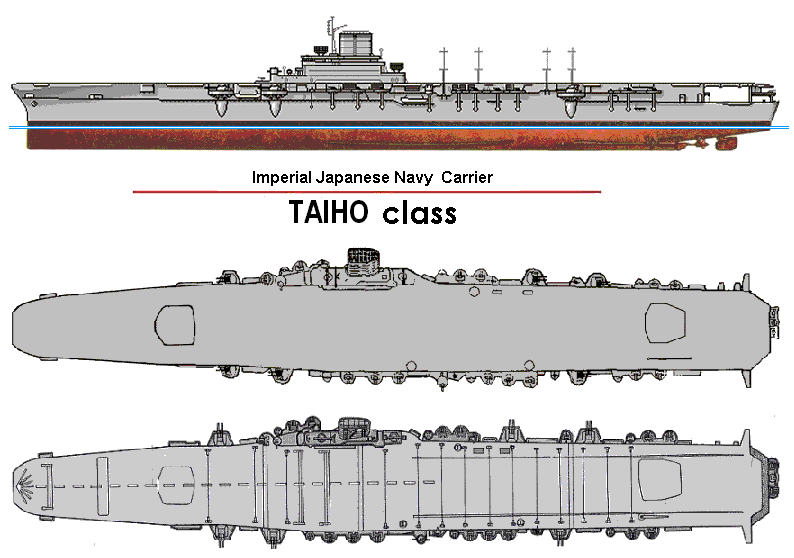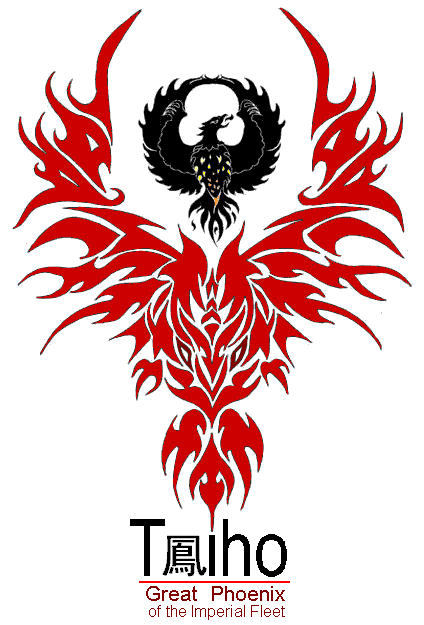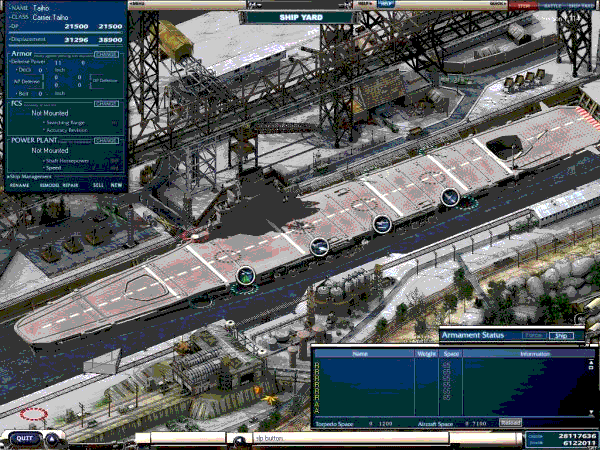
Imperial Japanese Navy - TAIHO Aircraft Carrier ==========================================================================

The Taihô was an aircraft carrier of the Imperial Japanese Navy during World War II. Taiho was the first Japanese carrier built with an armored deck and was based off the designs of the Shokaku class carriers.
"Taihô" means "Great Phoenix". Built by Kawasaki, she was laid down on 10 July 1941 and launched almost two years later, on 7 April 1943, and was commissioned on 7 March 1944.

Taihô was the first Japanese aircraft carrier of a new design which incorporated a heavily armored flight deck and 2 hangar decks, making her analogous to the Royal Navy's Illustrious class. She was also the most beautiful CV the Japanese built during the war, and a distinct departure design-wise, being the first Japanese carrier to incorporate a closed hurricane bow (a la contemporary British carriers).
She was ordered in 1939 and laid down by Kawasaki on 10 7 1941 at the shipyards at Kobe. The Taiho had one deck for stability concerns and its funnel was incorporated into the structure of her island. In addition, her hull plating was pushed out from the bow to reach the edge of her flight deck, which was 844 feetlong and 98 1/2 feet wide. Completed on 7 March 1944, the Taiho spent her first several months training, but was otherwise soon put into action.
On 19 June 1944, she was flagship of Vice-Admiral Jisaburo Ozawa's carrier force in the Battle of the Philippine Sea. As Taihô turned into the wind and launched an air strike, she was herself attacked by a spread of six torpedoes from the US submarine USS Albacore (SS-218). One of the Taihô's strike pilots, Sakio Komatsu, had just taken off when he saw the torpedo wakes and deliberately dived his plane into the path of a torpedo; the weapon detonated short of its target, and four of the remaining five missed.
The explosion of the torpedo that hit jammed the ship's forward aircraft elevator; its pit filled with gasoline, water, and fuel. However, no fire erupted, and the flight deck was unharmed.
Ozawa was unconcerned by the hit and launched two more waves of aircraft.
Meanwhile, a novice took over the damage-control work. He thought the best way to handle gasoline fumes was to open up the ship's ventilation system and let them disperse. When he did, the fumes spread all through the ship. Unknown to anybody on board, Taihô became a floating time bomb. About 3:30 that afternoon, Taihô was jolted by a severe explosion. A senior staff officer on the bridge saw the flight deck heave up. The sides blew out. Taihô dropped out of formation and began to settle in the water, clearly doomed. Though Admiral Ozawa wanted to go down with the ship, his staff prevailed on him to survive and to shift his quarters to the cruiser Haguro. Taking the Emperor's portrait, Ozawa transferred to Haguro by destroyer. After he left, Taihô was torn by a second thunderous explosion and sank stern first, carrying down 1,650 officers and men.
=================================================================================
NB: The above text has been collected / excerpted / edited / mangled / tangled / re-compiled / etc ... from the following online sources :
IJN - TAIHO class Aircraft Carriers - wikipedia article #1
IJN - TAIHO class Aircraft Carriers - www.globalsecurity.org
IJN - TAIHO class Aircraft Carriers - www.combinedfleet.com




